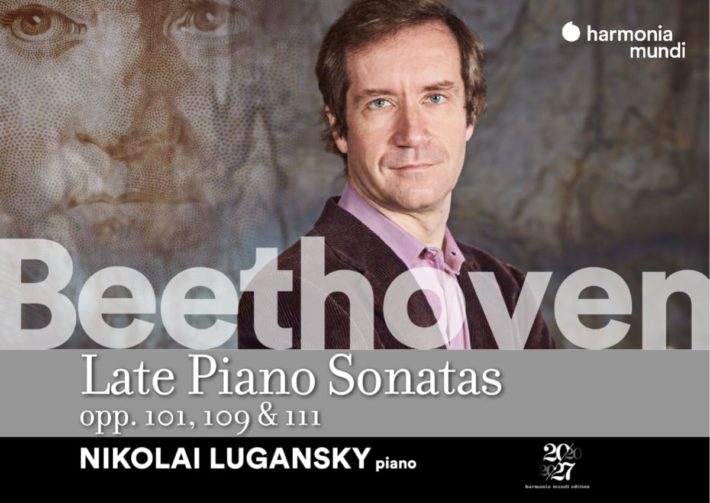As the 250th Beethoven anniversary draws to a close, pianist Nikolai Lugansky’s latest release heralds the end with a rendition of late piano sonatas. Lugansky is a name not instantly connected with this composer or considered a natural Beethovenian. It has been 15 years since his previous solo release of works by the composer, in which he recorded a selection of popular and early sonatas. Now with a maturer insight, he tackles the late sonatas of Op. 101, 109 and 111.
Those familiar with Igor Levit’s recordings will immediately notice a different tone. Tempos are taken very literally. Lugansky’s colors are much brighter, with the top melodic lines projecting prominently while lacking the warmth and yielding quality in the piano’s mid register. A distinctive feature is Lugansky’s phrasing; Compared to Levit, it’s shorter in duration and doesn’t breathe as naturally, lacking the poise one is accustomed to expect. Occasionally pointed — more so on the ascending, the phrases can raise more questions than answers.
The opening movement of 109 is direct and brisker than one may expect, maybe ignoring the overall title of “Sonata Fantasie”. In the second movement — “vivace alla marcia”, Lugansky executes with refreshing energy, the colors primary and bold with no shadows of ambiguity. The thinner textures of the central section of the instrument provide suitable transparency. Similarly to the opening, the final variations movement reveals a consistency in approach with a strong onward direction and a firm identity. And like the conclusion of the second movement, Lugansky relishes the more virtuosic moments, sometimes at the expense of the more reflective bars that open and close this masterpiece.
Related Classical Music Reviews
- Review: Beethoven – The Last Three Sonatas – Pollini (2020)
- Review: César Franck – Piano Works – Nikolai Lugansky
- Review: Beethoven – Complete Piano Sonatas – Igor Levit
The op. 101 Sonata contrasts strongly with the op. 109, both in character and in performance. Tempos are natural with sufficient space, and the characters are distinctively different, brighter, more lyrical. At times the tone is a little hard-edged, more so than the previous or following sonata, but one must admit it’s more appropriate to this piece. That being said, I did find the right-hand’s high treble brittle in quality, with fortissimos that are pushed too hard, lacking the sophistication of Levit and aligned with the powerful Pollini.
Lugansky is at his best when relishing the wild and untamed quality of the opening of the Op. 111 Sonata, emphasizing the spontaneous and improvisatory nature of the piece. Directions are observed, but with a dusting of artistic license and a huge dynamic range, the balance between the hands shines new light on the bass lines. Misuko Uchida allows the opening “Arietta” of the second movement to evolve and bloom into an intimate beauty; Levit is slightly less reverent, whilst Lugansky is more forthcoming. He dispatches the dotted, jazz-like character of variation 3 and morphs it effortlessly into variation 4. The conclusion is not as ethereal as one might wish, but all things told this is a distinctive and unique interpretation.
This release is not for the faint-hearted. Lugansky’s bigger sound doesn’t have the poetry or classicism Levit brings to these late works or the subtly of Uchida. He strips away many preconceptions, celebrating the virtuosity within. At their best, these boisterous, vivacious, characterful readings will make anyone familiar with these Sonatas listen afresh. Not a first choice, nor instantly winning interpretations, but they certainly prove thought-provoking, brimming with exuberance and virtuosity.

Beethoven – Piano Sonatas Op. 101, 109, 111
Nikolai Lugansky – Piano
Harmonia Mundi, CD HMM 902441
Beethoven – Late Piano Sonatas – Recommended Comparisons
Read more classical music reviews or visit The Classic Review Amazon store
Follow Us and Comment:
Get our periodic classical music newsletter with our recent reviews, news and beginners guides.
We respect your privacy.









